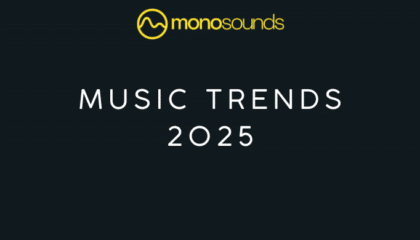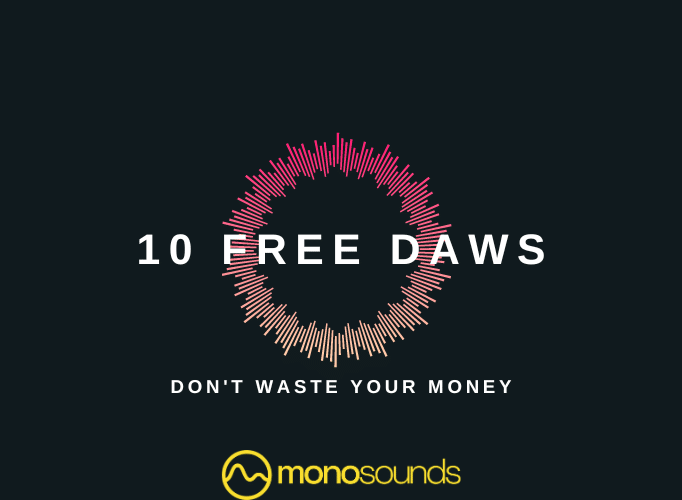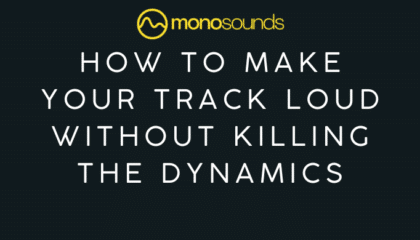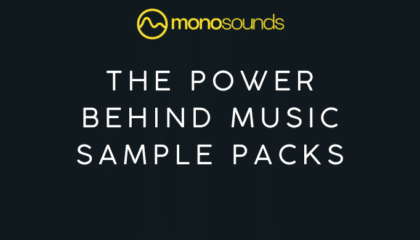
Title: Music Trends 2025: What’s Blowing Up on TikTok and…

As technology has advanced, creating music has become increasingly simple. A crucial tool for creativity is now the digital radio station (DAW). On a computer, music may be composed, recorded, and edited with this application. It offers artists and producers a wide range of options for creating and modifying sound files.
The DAW’s capabilities include virtual instruments, synthesizers, effects, mixing, mastering, and multitrack recording, to name a few. They help make superb music and greatly enhance the work of sound engineers and music producers.
For artists just starting out or those on a tight budget, choosing a DAW might be difficult. Yet, there are programs available for free download that offer many of the same capabilities as the expensive versions and might be a viable option for aspiring artists.
The best 10 free DAWs for music production will be discussed in this article. To help you make the best choice, we will go through each option’s features and functions in great depth. Learn fresh methods for composing music!
For iOS and Mac users, Apple released the free DAW GarageBand. Because of its many features and user-friendly design, it appeals to both aspiring artists and seasoned musicians.
One of the primary functions is the recording of audio and MIDI tracks.
Benefits:
Cons:
Garageband is a suitable tool for producing music in a variety of genres, including electronic, pop, and rock, and may be used to create demos, side projects, or music tracks for video projects.
was produced by BandLab Technologies.It is a DAW with complete functionality and a selection of tools for making music. One of the primary functions is the recording of audio and MIDI tracks.
Positives:
Cons:
commonly referred to as Linux MultiMedia Studio, is a free music production DAW that works with both Windows and macOS. It was developed with Linux as its operating system. The very versatile open source LMMS was created with a wealth of musical capabilities.
The main tasks include:
Benefits:
Cons:
Music in a range of genres, such as electronic, hip-hop, rock, and orchestral, may be created with LMMS. An excellent choice for creating remixes, original music, sound effects, and even sound designs for video games and movies.
All three versions of Windows, Linux, and macOS are supported by Ardour. It was created utilizing open-source software and has exceptional commercial functionality. The creation of audio and MIDI tracks is one of the main functions.
Benefits:
Cons:
Using Ardour, a variety of musical genres are usually created. This DAW is very beneficial for recording professionals looking for a reliable and flexible foundation for creating music. Ardour is necessary for a variety of jobs, including creating original music, fusing records, recording for movies and television, and more.
is developed for Windows, macOS, and Linux operating systems. This DAW has an intuitive user interface and a number of plug-ins among its options for music production.
The main tasks include:
Tracktion T7 is used to create a wide range of musical genres, including electronic, pop, hip-hop, and rock. It is beneficial for beginning artists looking for an easy-to-use, cost-free DAW to compose their first songs. Use Tracktion T7 to record voice, instruments, mixing, sound processing, and other things. You may create unique sounds and effects for your music with a variety of plug-ins.
First is the name of the popular professional DAW from Avid that is available for free. It provides users with a limited but incredibly powerful set of tools for audio recording, editing, and mixing.
The main features are:
Positives:
Cons:
Pro Tools First is beneficial for prospective musicians who are just getting used to using equipment that is often used in the music business for mixing and recording. It allows you to record voice and instruments, which will serve as the basis for your songs. Moreover, Pro Tools First supports third-party plug-ins, providing users the chance to improve their skills in sound synthesis and processing.
is suitable for music creation on your home computer or in a small studio. It is one of the best free DAWs accessible and has many features and functionalities.
Important features:
Positives:
Cons:
Employ the following as examples:
To create and edit audio files, Audacity, an open-source, free audio editor, is utilized. Even though the program isn’t a DAW, it may be used to edit sound files, record, and create simple musical arrangements.
The following main traits:
Positivity:
Cons:
Examples of effective use include creating sound effects and manipulating audio files.
is an open source DAW that provides high-quality audio recording and processing (Rapid Environment for Audio Production, Engineering, and Recording). After 60 days of free usage, Reaper requires the purchase of a license. Enables multichannel recordings as well as multitrack audio recording and mixing are important features.
Pros:
Cons:
is a free DAW that markets itself as a community-based online music creation platform. It has an online version that works on Windows and Mac and lets you create music using any device.
Ohm Studio’s key features include:
Ohm Studio’s features include:
The shortcomings of Ohm Studio include the following:
A summary of the main characteristics that a DAW could have
With the use of digital audio workstations, sometimes referred to as DAWs, musicians and producers have access to a wide range of instruments for composition, recording, and editing.Let’s look at the most popular components that may be found in a DAW.
MIDI
Data is sent between devices like keyboards, controllers, and computers via a protocol called MIDI, which stands for Musical Instrument Digital Interface. DAW uses MIDI to create and edit music. It may be used to edit notes, record them, change the tempo and tone, and do other things. MIDI may also be used to control virtual instruments and synthesizers.
Effects and instruments
DAWs offer a wide range of tools and effects that you may use to create unique sounds and textures. These include effects like chorus, reverb, flanger, dilatation, and distortion. DAWs may also include virtual instruments like synthesizers, samplers, and drum machines. Although you may occasionally employ these instruments and effects in quite different ways in DAWs, generally speaking they allow you to create sounds that are richer and more engaging.
File types
Just a handful of the file formats that DAW may produce and save files in include WAV, MP3, AIFF, and FLAC. Each file format has advantages and disadvantages according to it’s intended application. For instance, WAV is the most used format for audio recording and editing, despite the perception that MP3 is more portable for sharing on the internet. Though the accepted file formats for DAWs generally vary from program to program, almost every DAW really offers a broad range of possibilities.
Advice for future musicians
Let’s group our advice into three theme chunks for your convenience:
Knowing the fundamental procedures for making music in a DAW
Start by composing a song with the help of the preset selections or your personal virtual instruments.
Bass, chords, and percussion instruments should all be recorded and arranged in the correct order.
Use different effects and volume adjustments to give your song depth and space.
Match the rhythm and pace of the song by editing each section of the recording.
How to pick the best DAW
Consider your requirements and spending power.
Choose the DAW that best suits your skills and degree of expertise by researching the features of different DAWs.
Before you spend money on a professional version of a DAW, try out the free versions to get a feel for how they operate.
How to use MIDI and more DAW features
Study the fundamentals of MIDI and get some experience recording and editing MIDI data.
To add depth and tone to your song, use the built-in effects.
To produce original music, don’t be scared to experiment with various DAW features and settings.

Title: Music Trends 2025: What’s Blowing Up on TikTok and…

Introduction Hey there, it’s Maxim Hetman — sound designer, mixing…

Title: Why Custom Serum Presets Beat Stock Sounds Every Time:…

So, you’ve been inspired by the insane soundscapes of Flume…
